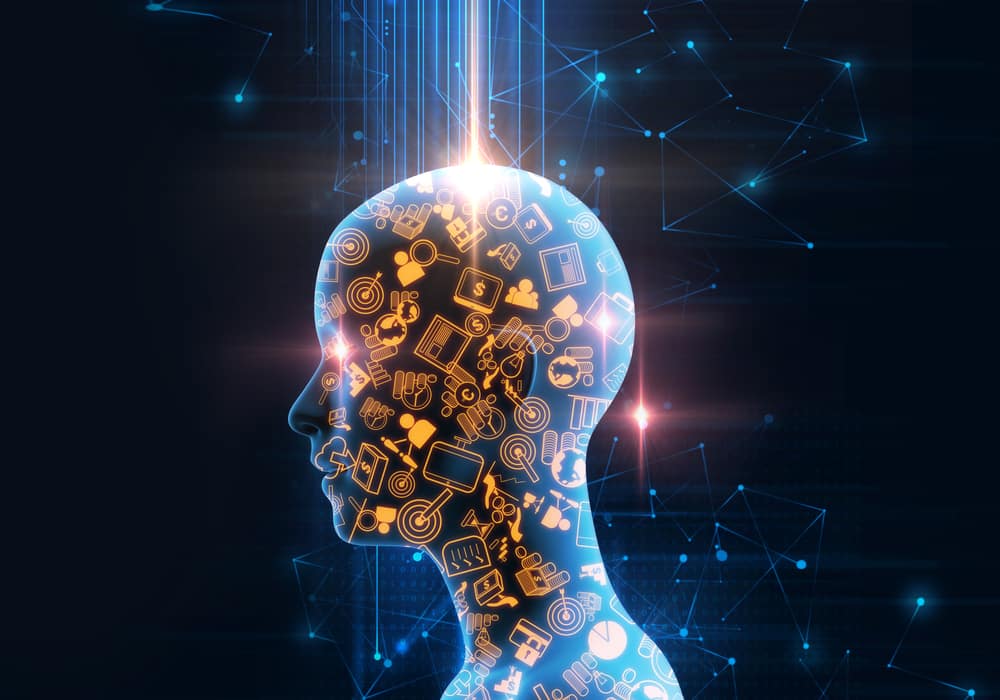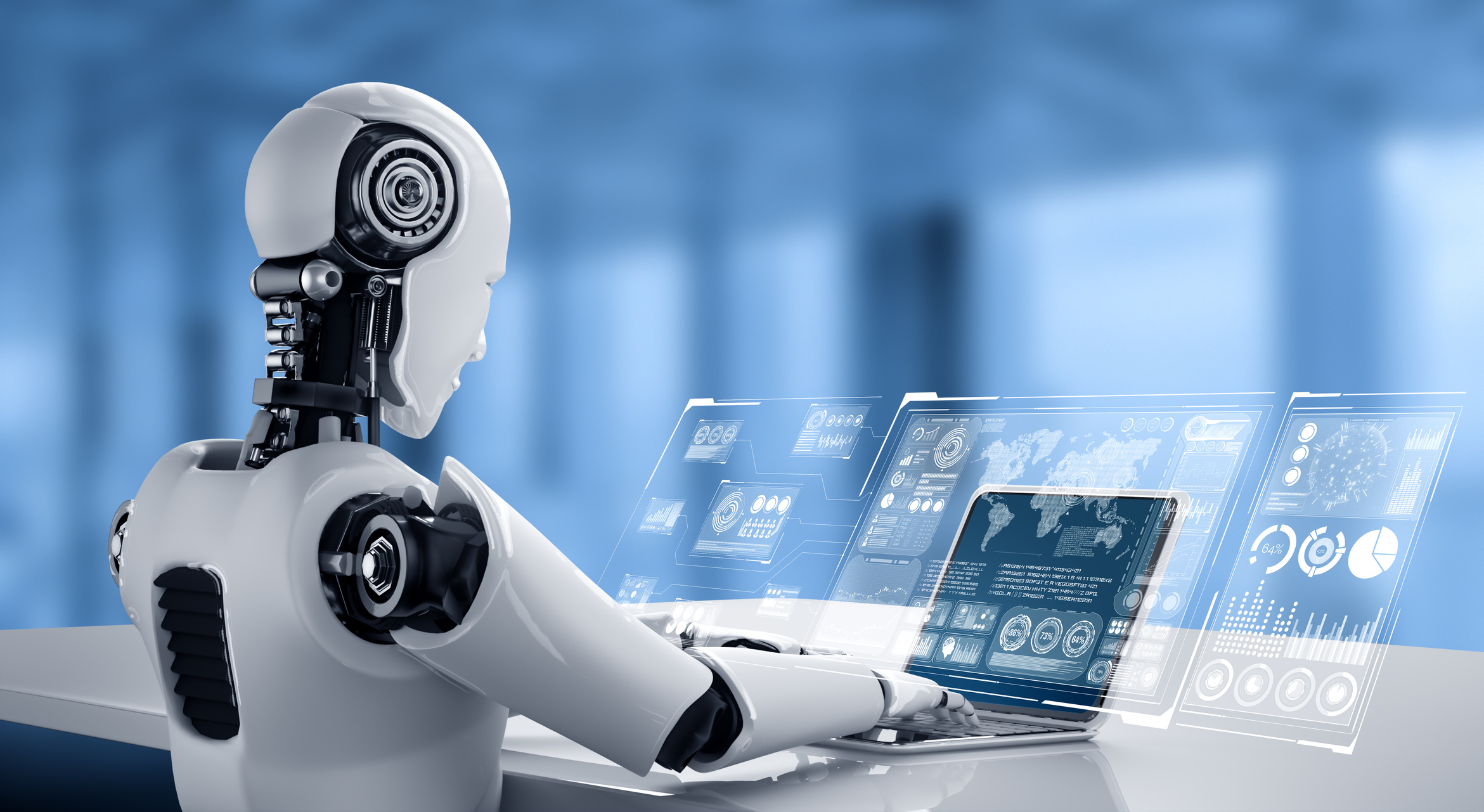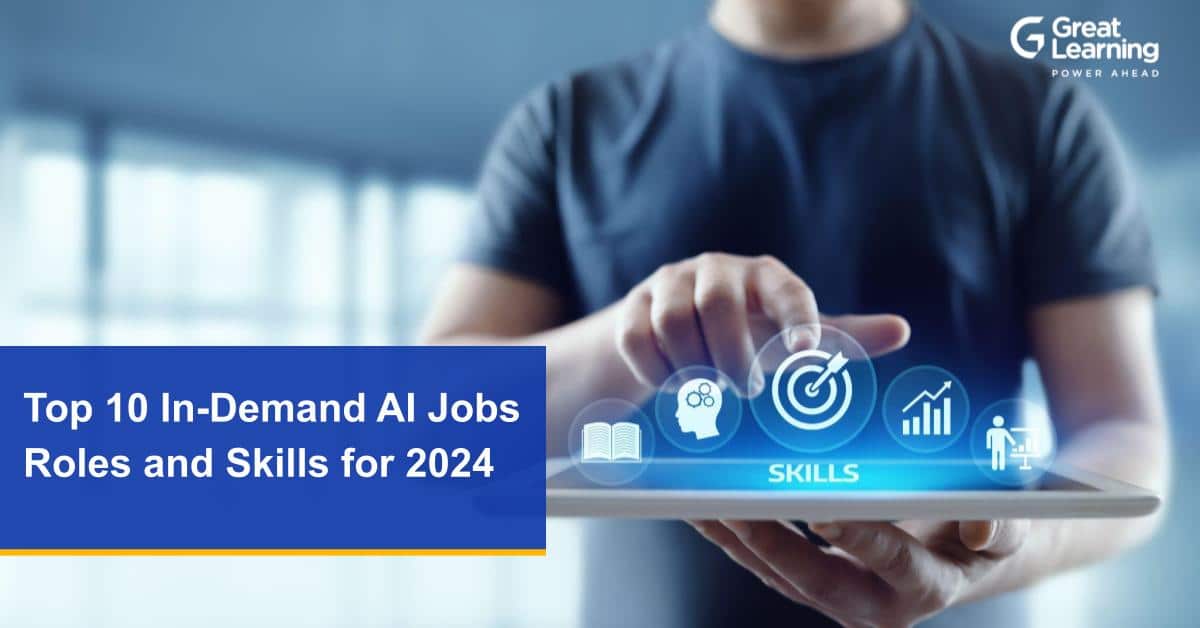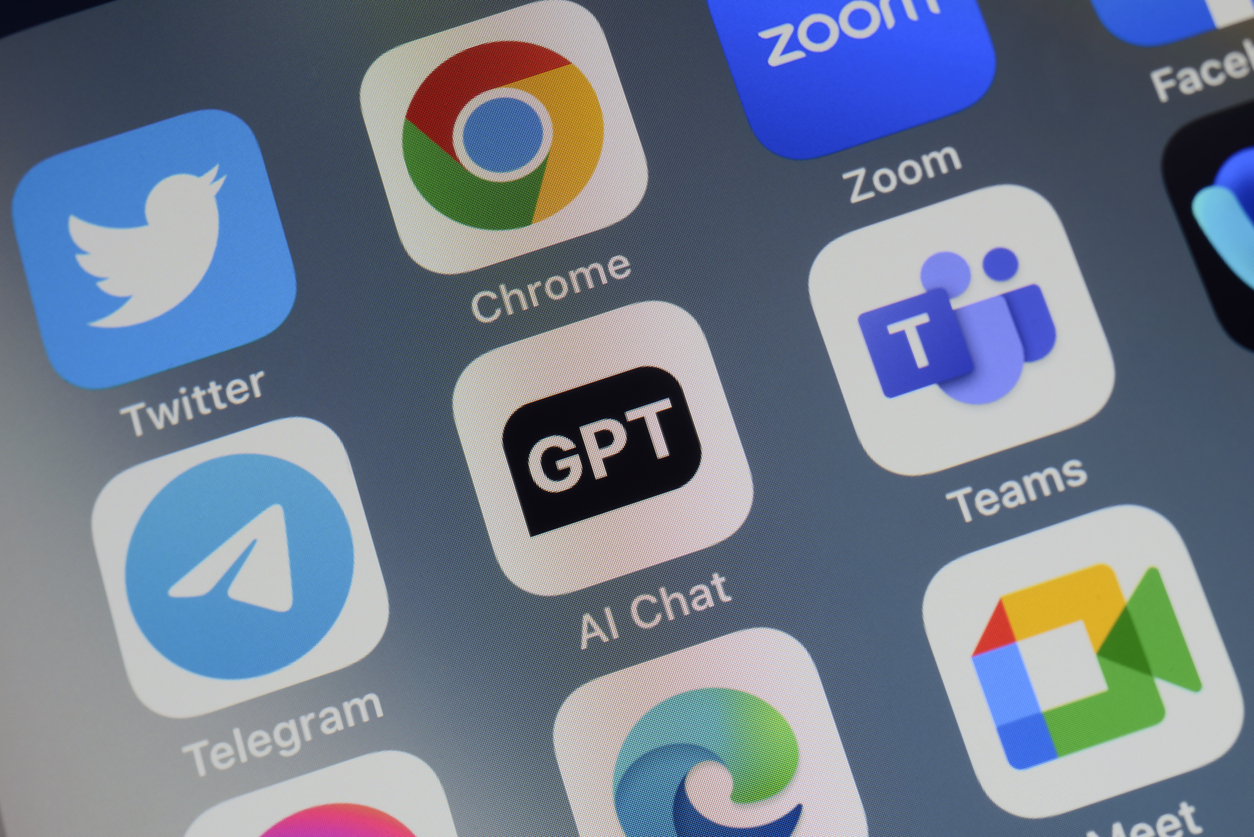- What is Artificial Intelligence?
- History of Artificial Intelligence(AI)
- How does Artificial Intelligence (AI) Work?
- What are the Types of Artificial Intelligence?
- What is the relationship between AI, ML, and DL?
- Applications of Artificial Intelligence in Business
- Examples of Artificial Intelligence
- What Makes AI Technology So Useful?
- What is the Turing Test in Artificial Intelligence?
- Career Trends in Artificial Intelligence
- Future of Artificial Intelligence
What is Artificial Intelligence?
Artificial Intelligence is the ability of a digital computer or computer-controlled robot to perform tasks commonly associated with intelligent beings. AI can also be defined as:
- An Intelligent Entity Created By humans
- Capable of Performing Tasks intelligently without being explicitly instructed.
- Capable of thinking and acting rationally and humanely.
History of Artificial Intelligence(AI)
The concept of AI is older than many think, starting with ideas of intelligent robots in ancient Greek myths. The official term “AI” was coined in 1956 at Dartmouth College by Marvin Minsky. Since then, AI has developed through many significant milestones.
Key Moments in Artificial Intelligence History
- 1943: The idea of a model that mimics brain cells is introduced.
- 1950: Alan Turing develops a test to see if machines can think like humans. The first computer based on neural networks was built.
- 1956: The term “Artificial Intelligence” is first used.
- 1959: The concept of “machine learning” is named.
- 1963: The first AI research lab is set up at Stanford.
- 1966: The first chatbot, ELIZA, is created.
- 1972-1980: Interest in AI drops, leading to a period known as the “AI winter.”
- 1980: AI research picks up again with the development of a successful business application.
- 1997: IBM’s Deep Blue became the first computer to defeat a world chess champion.
- 2002: AI starts being used in household vacuum cleaners.
- 2005: The U.S. military begins using robots.
- 2006: Big tech companies begin to use AI extensively.
- 2008: Google adds speech recognition to iPhone apps.
- 2011: IBM’s Watson wins a quiz show, demonstrating its understanding of language.
- 2012: A Google project shows significant advancements in AI learning from videos.
- 2014: Google tests a self-driving car; Amazon launches Alexa.
- 2016: A robot named Sophia is introduced.
- 2020: AI helps speed up research for a COVID-19 vaccine.
These events show how AI has moved from early concepts to playing a big role in our everyday lives.
How does Artificial Intelligence (AI) Work?
Building an AI system is like teaching a machine to think and act like humans do, but even better. T
o really understand how AI works, you’ve got to dig into its different parts and see how they fit into different industries.
You can also take up an artificial intelligence course that will help you gain a comprehensive understanding.
1. Machine Learning: ML helps machines make smart decisions based on what they’ve learned from the past. It saves time for businesses and helps them make better choices.To learn basic concepts you can enrol on a free machine learning course for beginners.
2. Deep Learning: This is a special kind of ML that teaches machines to sort through info in layers to figure things out.
3. Neural Networks: These are like the brains of the operation, sorting through info just like human brains do.
4. Natural Language Processing (NLP): NLP helps machines understand and respond to human language.
5.Computer Vision: This helps machines make sense of pictures by breaking them down and studying them.
6. Cognitive Computing: These algorithms try to think like humans, analyzing text, speech, images, or objects to give the right answer. Also, take up applications of artificial intelligence courses for free.
What are the Types of Artificial Intelligence?
Not all types of AI all the above fields simultaneously. Different Artificial Intelligence entities are built for different purposes, and that’s how they vary. AI can be classified based on Type 1 and Type 2 (Based on functionalities).
Here’s a brief introduction to the first type.
3 Types of Artificial Intelligence
- Artificial Narrow Intelligence (ANI)
- Artificial General Intelligence (AGI)
- Artificial Super Intelligence (ASI)
Let’s take a detailed look.
What is Artificial Narrow Intelligence (ANI)?
Artificial Narrow Intelligence (ANI), also known as Weak AI, refers to AI systems designed and trained to perform a specific or narrow range of tasks.
These systems operate under a limited predefined set of functions and cannot generalize knowledge beyond their specialized domain. ANI is the most common form of AI in use today and includes:
- Examples include voice assistants like Siri and Alexa, recommendation algorithms on platforms like Netflix and Amazon, image recognition systems, and chatbots.
- Characteristics:
- Highly specialized in one area.
- Unable to perform tasks outside its training scope.
- Operates under predefined parameters and rules.
To build a strong AI foundation, you can also upskill with the help of the free online course offered by Great Learning Academy on Introduction to Artificial Intelligence. With the help of this course, you can learn all the basic concepts required for you to build a career in AI.
What is Artificial General Intelligence (AGI)?
Artificial General Intelligence (AGI), or Strong AI or Human-Level AI, refers to AI systems that can understand, learn, and apply knowledge across a broad range of tasks at a level comparable to human intelligence.
AGI is characterized by its generalization capabilities, allowing it to perform any intellectual task that a human being can do. While AGI remains largely theoretical and has not yet been achieved, it aims to:
- Goals:
- Mimic human cognitive functions include reasoning, problem-solving, and understanding complex concepts.
- Adapt to new and unfamiliar tasks without specific training for each new challenge.
- Implications:
- Could revolutionize industries by automating complex decision-making processes.
- Raises ethical and safety concerns regarding control, ethical use, and impact on employment.
What is Artificial Super Intelligence (ASI)?
Artificial Super Intelligence (ASI) refers to AI systems that surpass human intelligence and capabilities in all aspects, including creativity, general wisdom, and problem-solving.
ASI represents a level of intelligence significantly more advanced than even the most brilliant human minds.
The concept of ASI is highly speculative and remains a topic of debate and theoretical exploration. Potential characteristics and implications include:
- Potential Characteristics:
- Superior problem-solving abilities.
- Enhanced creativity and innovation.
- Advanced decision-making skills and strategic planning.
- Implications:
- This could lead to unprecedented advancements in science, medicine, technology, and other fields.
- Poses significant ethical, philosophical, and existential risks, including concerns about alignment with human values and potential unintended consequences.
Understanding these different levels of AI helps grasp the current state of AI technology, its future potential, and the associated challenges and opportunities.
Check out this course on how to Build a career in ai.
Difference between Augmentation and AI
| Artificial Intelligence | Augmented Intelligence |
| AI replaces humans and operates with high accuracy. | Augmentation does not replace people but creates systems that help in manufacturing. |
| Replaces human decision making | Augments human decision making |
| Robots/Industrial IoT: Robots will replace all humans on the factory floor. | Robots/Industrial IoT: Collaborative robots work along with humans to handle tasks that are hard and repetitive. |
| Real-Time Applications of AI in Customer Success1. Automated Customer Support and Chatbots2. Virtual Assistants Automated Workflows | Real-Time Applications of IA in Customer Success1. IA-enabled customer analytics2. Discover high-risk/high-potential customers3. Forecasts Sales |
What is the Purpose of Artificial Intelligence?
The main goal of Artificial Intelligence (AI) is to enhance what we can do and help us make important decisions. For instance:
- AI aims to extend what humans can do and assists in making complex decisions.
- It can handle challenging tasks to simplify our daily lives and reduce the need for manual labor.
- AI seeks to improve how individuals, companies, and countries interact and cooperate for mutual benefit.
- Currently, AI is used to streamline operations and enhance decision-making processes, continuing the evolution of tools that have developed over centuries.
- Some view AI as a potentially transformative invention that might ultimately solve major issues like inequality and suffering.
- For now, businesses primarily use AI to increase efficiency, automate demanding tasks, and enable data-driven decision-making.
To learn more about the purpose of artificial intelligence and where it is used, you can take up an AI course and understand the artificial intelligence course details and upskill today.
Where is Artificial Intelligence (AI) Used?
AI is everywhere, helping large organizations understand and predict what users might do next.
For instance, Google’s predictive search suggests what you might type next, Netflix recommends movies to keep you watching longer, and Facebook suggests who to tag in photos by recognizing faces.
The main uses of AI involve processing large amounts of data to:
- Search through data and optimize finding the most relevant information.
- Use logic to carry out sequences of actions based on specific conditions.
- Detects patterns in data for unique insights.
- Apply probability models to predict what might happen next.
What is the relationship between AI, ML, and DL?
As the above image portrays, the three concentric ovals describe DL as a subset of ML, which is also another subset of AI.
Therefore, AI is the all-encompassing concept that initially erupted. It was then followed by ML that thrived later, and lastly DL that is now promising to escalate the advances of AI to another level.
Applications of Artificial Intelligence in Business
AI has the potential to transform various industries, all of which are highly dependent on data. At its heart, AI excels at processing data, making it a powerful tool for optimization across different fields.
AI’s broad applicability continues to grow, proving its value in streamlining operations and enhancing decision-making across various sectors.
Robots in AI
The field of robotics has been advancing even before AI became a reality. At this stage, artificial intelligence is helping robotics to innovate faster with efficient robots. Robots in AI have found applications across verticals and industries especially in the manufacturing and packaging industries.
Examples of Artificial Intelligence
- Facebook Watch
- Facebook Friends Recommendations
- Siri, Alexa and other smart assistants
- Self-driving cars
- Robo-advisors
- Conversational bots
- Email spam filters
- Netflix’s recommendations
- Proactive healthcare management
- Disease mapping
- Automated financial investing
- Virtual travel booking agent
- Social media monitoring
What are the Advantages of Artificial Intelligence?
There’s no doubt in the fact that technology has made our life better. From music recommendations, map directions, and mobile banking to fraud prevention, AI and other technologies have taken over.
There’s a fine line between advancement and destruction. There are always two sides to a coin, and that is the case with AI as well. Let us take a look at some advantages of Artificial Intelligence-
Advantages of Artificial Intelligence (AI)
- Reduction in human error
- Available 24×7
- Helps in repetitive work
- Digital assistance
- Faster decisions
- Rational Decision Maker
- Medical applications
- Improves Security
- Efficient Communication
What Makes AI Technology So Useful?
Artificial intelligence offers several critical benefits that make it an excellent tool, such as:
- Automation – AI can automate tedious processes/tasks, without any fatigue.
- Enhancement – AI can enhance all the products and services effectively by improving experiences for end-users and delivering better product recommendations.
- Analysis and Accuracy – AI analysis is much faster and more accurate than humans. AI can use its ability to interpret data with better decisions.
Simply put, AI helps organizations to make better decisions, enhancing product and business processes at a much faster pace.
How do we measure if Artificial Intelligence is acting like a human?
Even if we reach that state where an AI can behave as a human does, how can we be sure it can continue to behave that way? We can base the human-likeness of an AI entity on the:
- Turing Test
- The Cognitive Modelling Approach
- The Law of Thought Approach
- The Rational Agent Approach
Let’s take a detailed look at how these approaches perform:
What is the Turing Test in Artificial Intelligence?
The basis of the Turing Test is that the Artificial Intelligence entity should be able to hold a conversation with a human agent. The human agent ideally should not be able to conclude that they are talking to Artificial Intelligence. To achieve these ends, the AI needs to possess these qualities:
- Natural Language Processing to communicate successfully.
- Knowledge Representation acts as its memory.
- Automated Reasoning uses the stored information to answer questions and draw new conclusions.
- Machine Learning to detect patterns and adapt to new circumstances.
Cognitive Modelling Approach
As the name suggests, this approach tries to build an Artificial Intelligence model based on Human Cognition. To distil the essence of the human mind, there are 3 approaches:
- Introspection: Observing our thoughts, and building a model based on that
- Psychological Experiments: Conducting experiments on humans and observing their behaviour
- Brain Imaging: Using MRI to observe how the brain functions in different scenarios and replicating that through code.
The Laws of Thought Approach & The Rational Agent Approach
The table below shows the two different approach: what it is and the challenges faced:
| Approach | What It Is | Challenges |
| Laws of Thought Approach | A set of rules that help us think, which can also be used to program artificial intelligence. | It’s hard to apply these rules to real-world problems, which need more than just fixed rules to solve. Plus, AI might struggle to mimic human actions when there’s a lot of uncertainty. |
| Rational Agent Approach | A strategy where an AI tries to make the best decision based on its current situation, rather than just following fixed rules. | Sometimes, there’s no single best choice and the AI has to decide among many options, each with its own pros and cons. This requires the AI to be very flexible. |
Career Trends in Artificial Intelligence
- Growing Demand: The demand for careers in Artificial Intelligence (AI) has been steadily increasing. In India, 57% of companies are actively seeking to hire skilled AI professionals.
- Salary Increase: Individuals moving into AI roles are seeing significant salary increases, typically between 60-70%.
- Top Cities: Mumbai leads in AI job opportunities, closely followed by Bangalore and Chennai.
- Job Creation: According to the World Economic Forum, AI is expected to create 133 million jobs by the year 2020.
- Workforce Challenges: Although the demand for AI jobs is rising, the number of skilled workers hasn’t kept up.
- Industries Benefiting from AI: AI is making a big impact across various sectors including healthcare, banking and finance, marketing, and entertainment.
- Key AI Positions: Some of the top jobs in this field include Deep Learning Engineer, Data Scientist, Director of Data Science, and Senior Data Scientist.
- Time to Upskill: With the increase in opportunities, now is an ideal time to gain or improve AI skills.
Future of Artificial Intelligence
Artificial Intelligence (AI) is becoming a major player in technology. Around the world, organizations are creating innovative AI and machine learning tools.
AI is shaping the future of all industries and driving new technologies like big data, robotics, and the Internet of Things (IoT).
As it grows, AI will continue to lead technological advancements, offering many opportunities for trained professionals.
Career Opportunities in AI
- AI & ML Developer/Engineer
These professionals run statistical analyses, manage machine learning programs, and develop deep learning systems. They need strong programming skills in languages like Python, Scala, and Java. The average salary for an AI engineer in India ranges from INR 4 to 20 lakhs per year.
- AI Analyst/Specialist
AI analysts provide AI-driven solutions to enhance services in various industries, using data to identify trends and patterns. This role requires a solid background in programming and system analysis. Salaries range from INR 3 to 10 lakhs per year, depending on experience and employer.
- Data Scientist
Data scientists collect and analyze vast amounts of data to identify trends and develop predictive models. They need to know several programming languages and work with frameworks like Azure ML Studio and Spark MLlib. In India, their salary typically falls between INR 5 and 22 lakhs per year.
- Research Scientist
Focused on innovating AI solutions, research scientists must be experts in fields like deep learning and neural networks. This role demands advanced degrees and offers a minimum salary of INR 35 lakhs annually in India.
- Product Manager
In AI-centric roles, product managers use data to solve business problems and implement AI strategies to evaluate impacts. Starting salaries are around INR 7 to 8 lakhs per year but can rise significantly with experience.
- Robotics Scientist
With the rise of automation, robotics scientists are increasingly in demand to develop and manage robotic systems. This career requires a deep understanding of programming, mechanics, and electronics, among other fields.
AI is not just the future; it’s also the present, continually advancing and opening new paths in various sectors. Check Out Artificial Intelligence Certificate Course









Comments are closed.